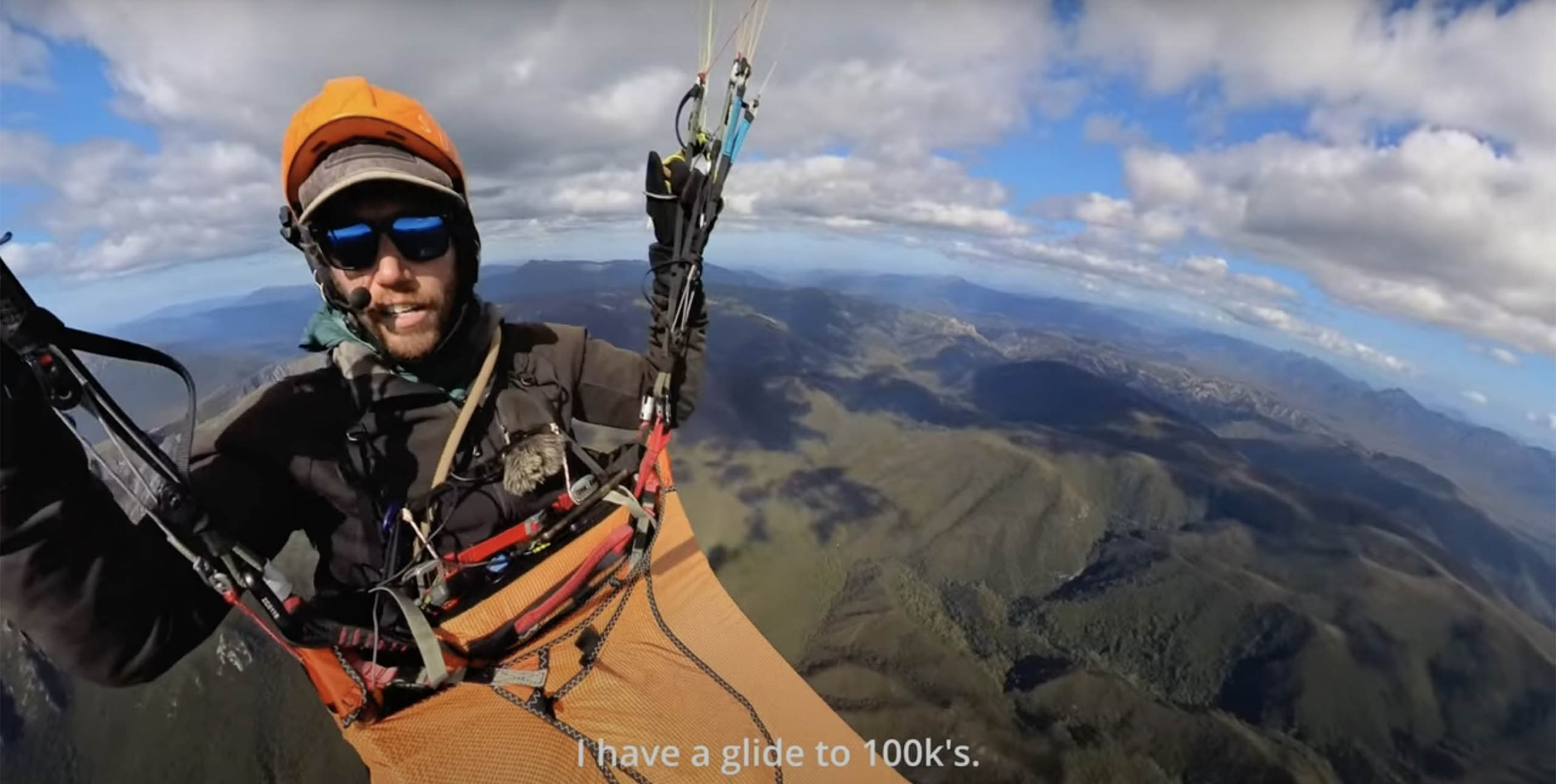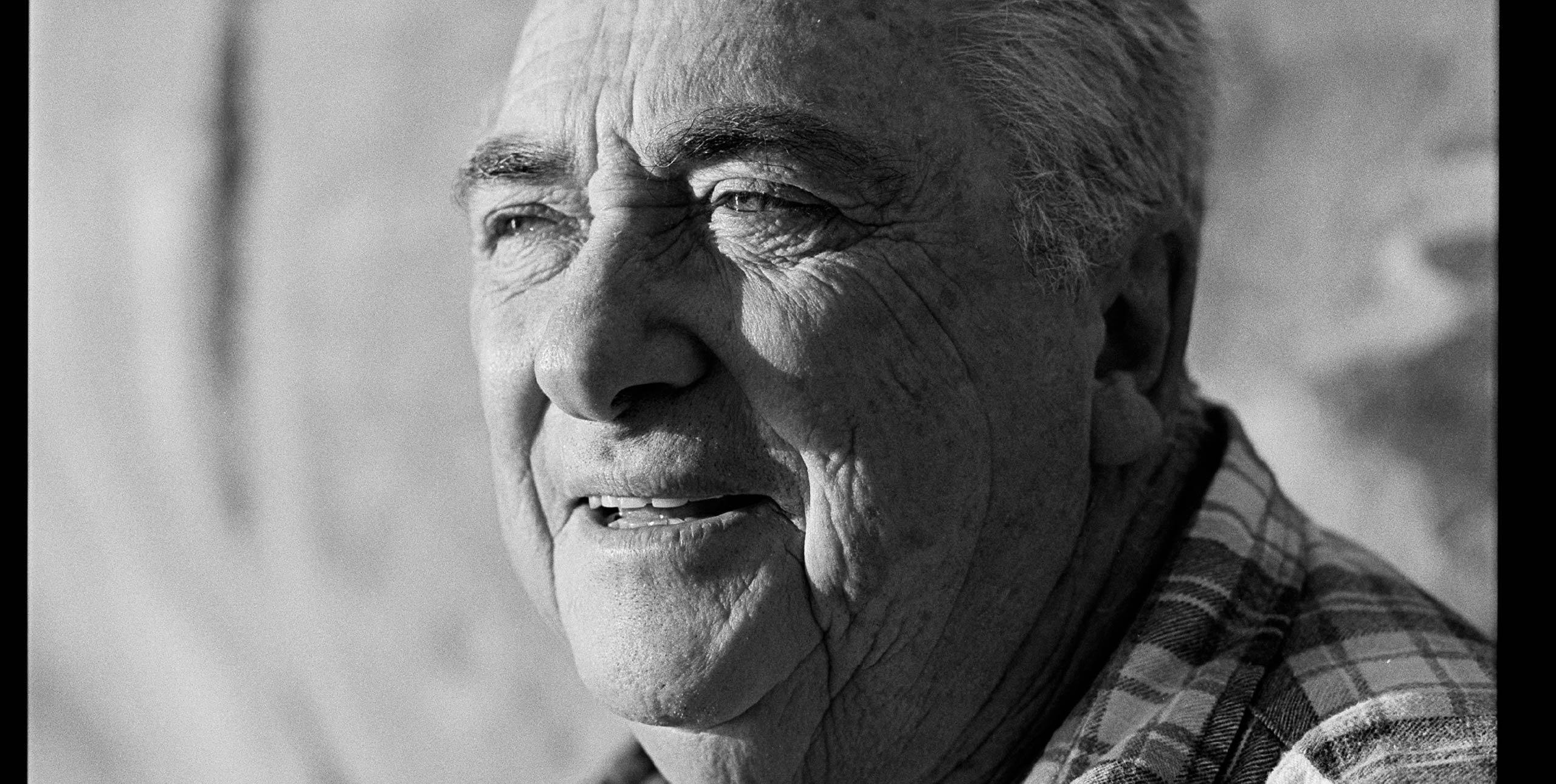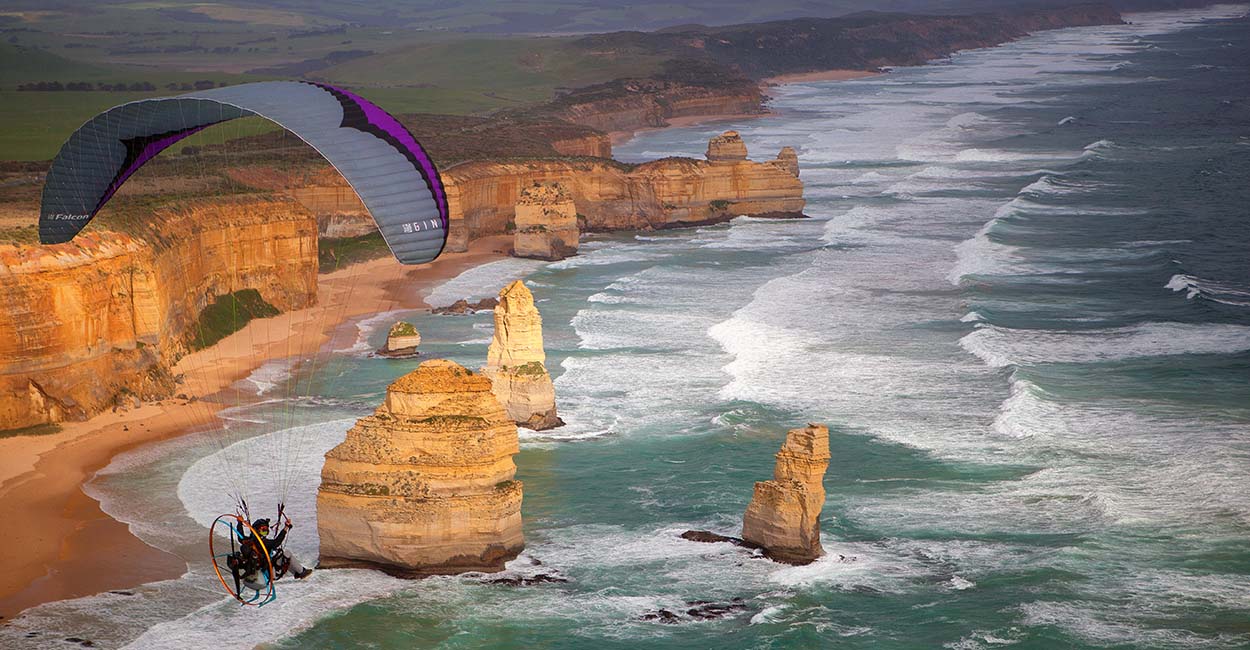
You should have been there… Forbes Flatlands turned on again this year, allowing for the biggest task ever set in competition history. Ollie Chitty reports
Forbes Flatlands is the first big comp of the year, and ran from 29 December 2017 to 5 January 2018. Having hosted the FAI Hang Gliding World Championships in 2013 Forbes is known in the hang gliding scene as offering some of the best and most consistent flying conditions anywhere in the world at that time of the year. As a result, the competition attracts pilots from all around the world.
This year saw pilots gather for a few practice days as the forecast good weather put on a good show. Notably Alexandra “Sasha” Serebrennikova set new Women’s Declared and Open Distance Triangle world records. Taking off from Forbes she flew southwest to West Wyalong then east to Grenfell before pushing back north west to Forbes to complete her task landing at gone 7pm. Congratulations Sasha! “And to think this is only the practice task at Forbes!” she said afterwards.
Every year the competition HQ is run at the rugby club in the centre of town where all the pilots meet for a 10am task briefing. It’s usually already north of 35C so keeping pilots out of the sun is quite a priority! From here the pilots are told the task course, start time and any other details they need for the day. It’s then usually about two hours before the first launch window opens at 12.30pm, so it’s nice and relaxed as it only takes about 10 minutes to get to the takeoff field, which is formally known as the Bill Moyes International Airfield.
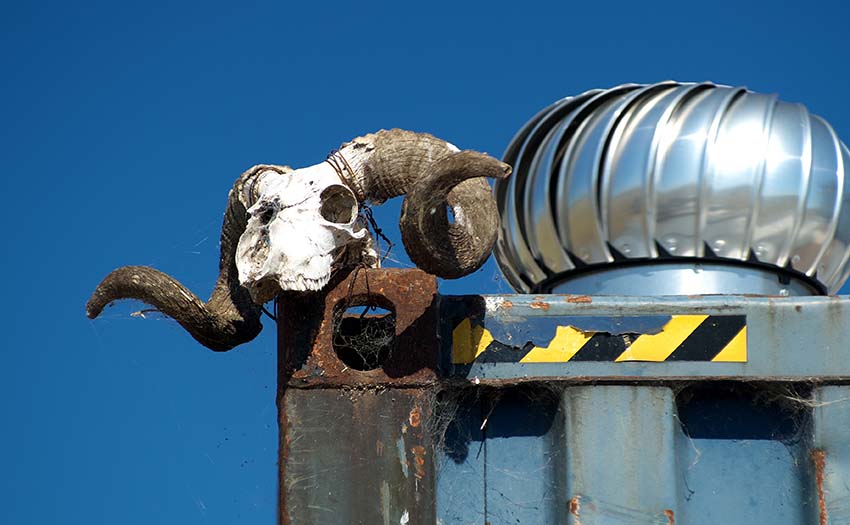
Day One: Canned!
Day one in any competition is always quite tense. The famous saying rings through everyone’s minds: “You can’t win a competition on the first day but you sure as hell can lose it!” The task set for day one was a 155km route to the SSE. There was a lot of overcast and a strong breeze, with some cumulus forming under the high cloud but a band of rain possibly pushing in from the west.
With much discussion between the safety committee and task committee the launch window was pushed back from 12.30pm till 2.30pm to give the strong winds time to die down. As 2.30pm arrived nearly half the field were in the air and climbing well, but maybe too well as a large area of rain started to descend on course line and the safety committee decided to cancel the day. The Laminate gliders we fly in competitions really don’t handle well in the rain, but everyone made it down safe back in the start cylinder.
Day Two: Task 1
The weather for day two looked far more promising, still quite strong winds out of the WSW but no overdevelopment and a 9,000ft cloudbase. With day one out of the way it was a little more relaxed before take-off in the tow field. Our task took us north to Trangie just to the west of Dubbo for a 142.8km optimised race-to-goal with a later start again to let some of yesterday’s bad weather clear the area.
A challenging cross wind for the first part of the flight was forecast to back off later to a more predominant tail wind. All of the competitors got up and off and there was plenty of room in the 10km start radius. A large proportion of pilots took the first start at 3pm but quite quickly people were taking different routes on course: some took a more direct route keeping just left of course line enough to battle the wind, while other pushed much harder into the crosswind to make the latter parts of the flight easier.
First into goal was Atilla Bertok followed closely by Ollie Chitty from the first clock after taking the more direct route and not straying far from course line. It was 10 minutes before the next competitors arrived. Guy Hubbard and a chasing pack of second starters (15:15) with Josh Woods, Steve Blenkinsop and Niki Longshore. Niki also took a decisive day win over the other women in the competition being the only one in goal.

Day 3: Task 2
A switch in the wind brought us a steady northerly flow. This meant we would be seeing predominantly blue conditions early on and only 10knts of wind from the north in the boundary layer. We called a 185.7km race to goal via two turnpoints finishing at a town called Bookham north west of Canberra.
It was noticeably slower conditions in the start cylinder and climbs were only getting to 7,000ft. The first start clock came around but only a few pilots at the top of the gaggle took the plunge, everyone else seemed to be of the same consensus that a later start gate would prove more efficient if the conditions got better. It was only 15 minutes before the second start was activated and everyone started hunting down the lonely few gliders on course. With two large-radius turnpoints along the way there was quite a split of pilots along the courseline. Josh Woods took the day win closely, followed by Jonny Durand and Atilla Bertok all taking the second start.
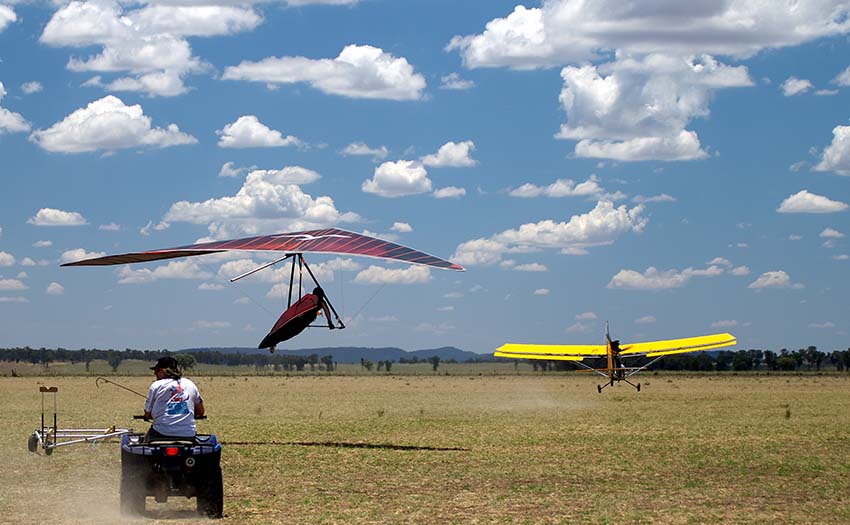
Day 4: Task 3
The ever-reliable southwest wind returned and a 195.2km task to Gulgong airstrip was set. This wind direction brought a cooler air mass and even better flying conditions. There was talk of getting to over 10,000ft so we were reminded at pilot briefing about the effects and dangers of hypoxia.
Straight off the tow it was obvious the day was much stronger, and already by 12:30pm we were getting close to 10,000ft with climbs well in excess of 1,000ftpm. Almost everyone took the first start and a good strong gaggle made the first 50km look easy!
Niki Longshore was once again one of the top pilots pushing the gaggle and was on glide heading for climbing gliders ahead when she was hit by a incredibly strong patch of rough air sending her glider pointing straight up to the sky with no airspeed left to recover. She very quickly pulled her parachute and was on a descent through a gaggle of gliders from 8,000ft! Niki did an incredible job to stop the rotation before being placed quite perfectly in a paddock with road access and under the shade of trees! Jonny Durand was first on scene – after seeing Niki pull her chute he descended with her side-by-side and landed in the field within seconds of her arrival. Many pilots stayed in the area to make sure things were okay before heading back on course. Unfortunately Niki’s competition would be over after such a strong and dominating start and Jonny would receive his score made from an average of his future total.
First into the Gulgong goal would once again be Atilla Bertok, closely followed by Tyler Borradaile and Josh Woods.
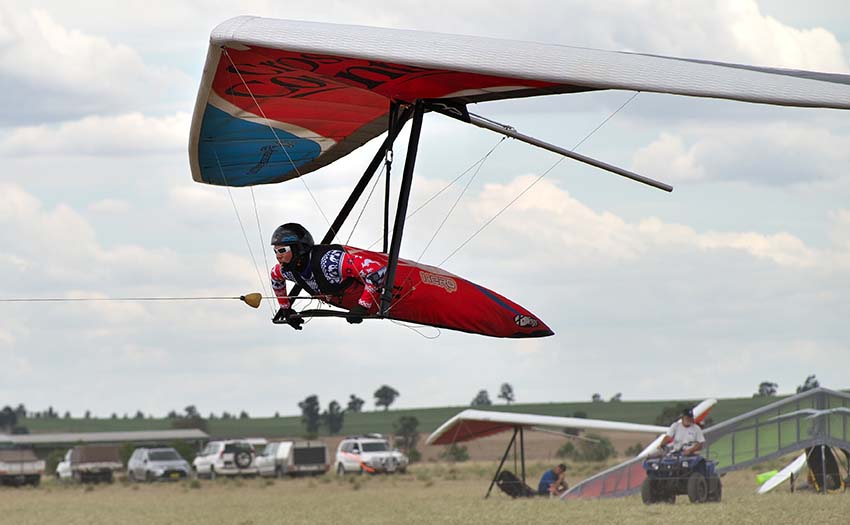
Day 5: Task 4
Waking up on the morning of the 2nd of January we were greeted by our competition WhatsApp group with a message of “Briefing 10am, be here ready to fly!”
There had been talk of going big today. The south wind was still blowing but slightly stronger with even higher bases than yesterday, so it looked like the task committee was planning a big one! In 2014 the distance-to-goal record in a competition task was set at 368km flying from Forbes to a small town north called Wallygett. Today we had a slight west component to the wind and would be flying 389km to another flying site: Manila!
To make this new record task pilots had to be taking off much earlier than previous days, so the first start was 12:00 just 1hr30 after briefing in town. For many pilots this would be a personal best flight and nearly everyone took the first start getting on their way as soon as possible. Even at midday there were good cumulus clouds and pilots reporting climbs to over 11,000ft.
A lot of pilots had Niki’s accident in mind for a while, and glides were noticeably slower for the first portion of the course. There seemed to be two main routes taken: a few pilots took the direct course-line route while other pilots headed further west and followed a line of mountains hoping to use them as triggers.
It was only five hours later before the first pilot called on final glide. Ollie Chitty from Great Britain was first in goal with a time of 05:18:23 just ahead of Jonny Durand with a time of 05:19:27 and Tyler Borradaile took third place just a few seconds later. Eventually we would see 16 pilots make the record task with many personal bests broken and smiles all round; except for the retrieve drivers who had over a 1,000km total journey, the real heroes of the day!
Sasha took an early bird launch and flew 10km into the headwind to a declared starting point with an attempt at breaking another woman’s world record, extending her flight to over 409km! We’re yet to hear if she has made it four records this week but she sure has put the effort in!
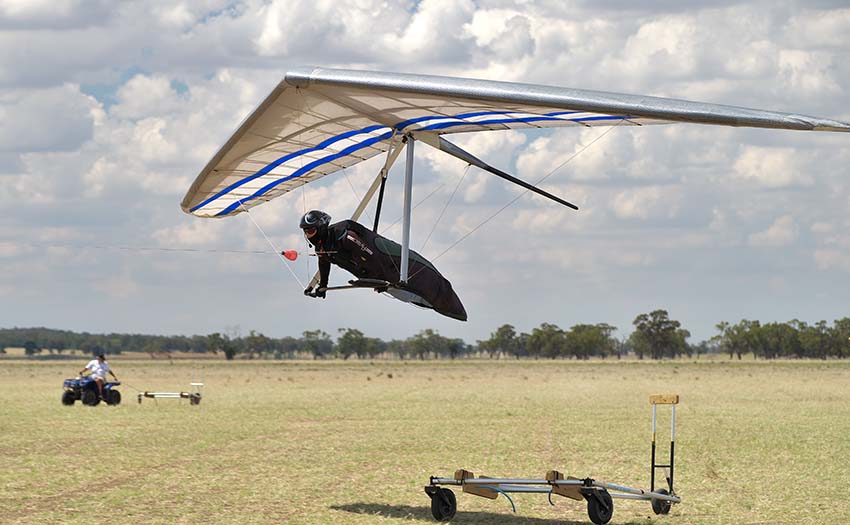
Day 6: Task 5
With many pilots not returning back till the early hours of the morning the next task briefing was delayed by a few hours giving people time to rest and recuperate before flying again. A shorter dogleg task via one turn point of 155km was called, landing at Wellington airstrip starting at 15:00.
The day was the polar opposite of the previous day: no clouds and slow climbs. Many pilots were dropped in the first hour struggling to find and climbs they could. Once at the turnpoint the conditions seemed to get better, but it was a strong crosswind for the final leg. Some people landed short after drifting too far down wind giving a hard final glide. Ollie Chitty took a second consecutive day win followed closely by Jonny Durand and Guy Hubbard. Only nine pilots made the task.
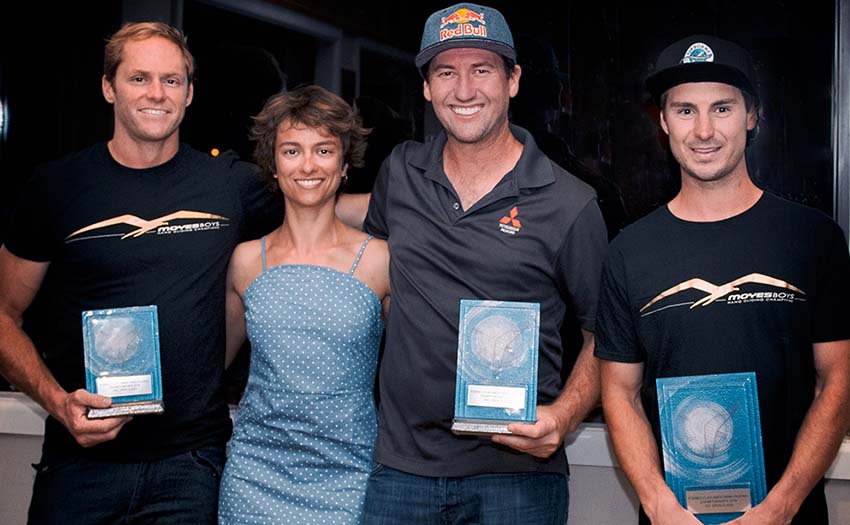
Day 7: Task 6
Finally a day with less wind. Task 6 was called a rest day for the retrieve drivers so we would be flying a closed loop triangle of 166km! Pilots were starting to look noticeably fatigued after five back-to-back long tasks (and a record task!) so the towing was slow to get going. Fortunately there were good clouds in the start cylinder and everyone had plenty of room to pick their start. Almost everyone took the first start again at 13:50 with only a few pilots choosing to take the gamble on a later start at 14:10.
The shorter first leg of the triangle went fast with a slight chasing tailwind, but some pilots got low and had to take slow climbs from the foothills at the turnpoint. Heading northeast into the second turnpoint the day started to blue out and become a little more tricky, it was here that the fast first starters had a slight time advantage over the stragglers and didn’t waste much time getting out. The wind had picked up slightly and made the final leg of the triangle more difficult as pilots headed over high ground and minimal landing areas. Once out onto the flats back to good climbs and long final glides of over 30km! Jonny Durand took the day win with a time of 03:33:59 closely followed by a consistently well-scoring Rory Duncan. Jason Kath took out third place for the day just 30 seconds behind Rory.
Good music and many goal margaritas were handed out in goal as pilots and retrieve drivers celebrated at last a task with no five-hour drive home!

Day 8: Task 7
The final task! Seven straight competition days had the field of competitors looking and sounding very tired! We had a weather system passing through the area and the wind direction could be anything later in the day. We called a task that headed northeast to a large 40km radius before turning west into an 50km radius and returning south down to goal at Peak Hill airstrip. Depending on the weather this could be a final 15km strong headwind stint. There was discussion at the pilot briefing if this was safe as we would be crossing over a firing range, but eventually agreed this was the best bet for the conditions forecasted in the local area.
After launch many pilots commented how rough the air was in the 5km start cylinder, some managing better than others to get up, but everyone at least managed to get away for the start. The task saw a fair tailwind for the first 50km on course line before dropping to almost nothing before the first turnpoint. The faster pilots of the day made a better run after the first turnpoint and made short work of the second leg. With two very large radiuses there can be quite a few different routes depending on where you intercept the optimum point of turnpoint, and this stretched the field out into many small gaggles. Atilla Bertok took another day win closely followed again by Tyler Borradaile and Rory Duncan seconds later.

The winners
The scores for the top three pilots were incredibly close. No one would know the final scores until the prize-giving that evening so it was a quick pack up and off to get home and ready for the presentation
The only pilot to make goal every day of the competition was Rory Duncan and so rightfully he took the overall win and became national champion by one single point. With a total of 5,880 he beat seven-time champion Jonny Durand on 5,879! Josh Woods took a strong third place after another consistent competition. Alexandra Serebrenikova took first place in the women’s class, just ahead of Yoko Sano from Japan.
Postscript
Following her flights during Forbes Sasha Serebrennikova has claimed four FAI women’s world records, including:
1. Distance of 210.4 km over a triangular course
2. Speed of 37.83 km/h over a triangular course of 200km
3. Straight distance of 407.99 km to a declared goal
4. Free distance of 417.1 km over up to three checkpoints


